Right before the baby...
A (half) day in Ukrainian Village
Short updates:
Baby boy #2 arrived last month. See the subscriber chat song share thread for an inside scoop on a song that got played during delivery—I wasn’t expecting to see that posted.
This is for the construction site aficionados among you: I went to the Loop to get the baby’s birth certificate, and realized that the Thompson Center construction site is really striking. Google bought the building from the State of Illinois, and they’re replacing the façade and the internal systems. Whatever you think of the building and what’s happening to it, this is an unusual sight.
Not sure how many of my readers here expect an election take from me. I think it’s greater than 0 but not too much higher. I’ll just say that a large part of the explanation for what happened in the US presidential election is that incumbents are struggling everywhere in the world, most likely due to inflation.
Here’s some readings that I found helpful: 1, 2, and 3 (from early this year)
Right before the baby was born, there was Open House Chicago. As I wrote in my last post, we were planning on exploring Ukrainian Village. We did go through with that plan, but without Julie, which was wise given what happened soon after. Our group was me, my 2-year old son, and another father-son pair.
What is Open House Chicago?
Open House Chicago (OHC) is a free festival run by the Chicago Architecture Center, where many buildings that are usually not open to the public become free access for a weekend in October. Many of the sites are well-known buildings downtown, and there’s certainly a lot of gems there, but we’ve found that it’s a great way to explore a neighborhood that we’re not too familiar with. Unless we happen to be out of town, we try to do it every year.
Apparently there’s similar events in other cities, and you can see a list here.
What is Ukrainian Village?
As you can tell from the name, Ukrainian Village is a neighborhood that’s historically been heavily populated by Ukrainian immigrants. It’s located in the Near West Side, and although there’s no official boundaries, I would say it’s between Damen and Western in the east-west direction, and stretches down from Division to a little south of Chicago Avenue.
It’s been a while since I had a map to go with a post. There are pins on the map for all the places I talk about in this post, and it looks like the pins mostly cover the western half of the neighborhood.
On the history of Ukrainian Village, this guide from Chicago Reader is the best one-stop resource that I found online. The origin of these ethnic neighborhoods can be somewhat random—once you have a critical mass of a certain ethnic group, newcomers sharing the same culture will try to be near them—but it does make some sense for the Ukrainian neighborhood to be here. Neighborhoods to the east and north, including Wicker Park and Bucktown1, were heavily Polish, with a culture very familiar to the Ukrainians.
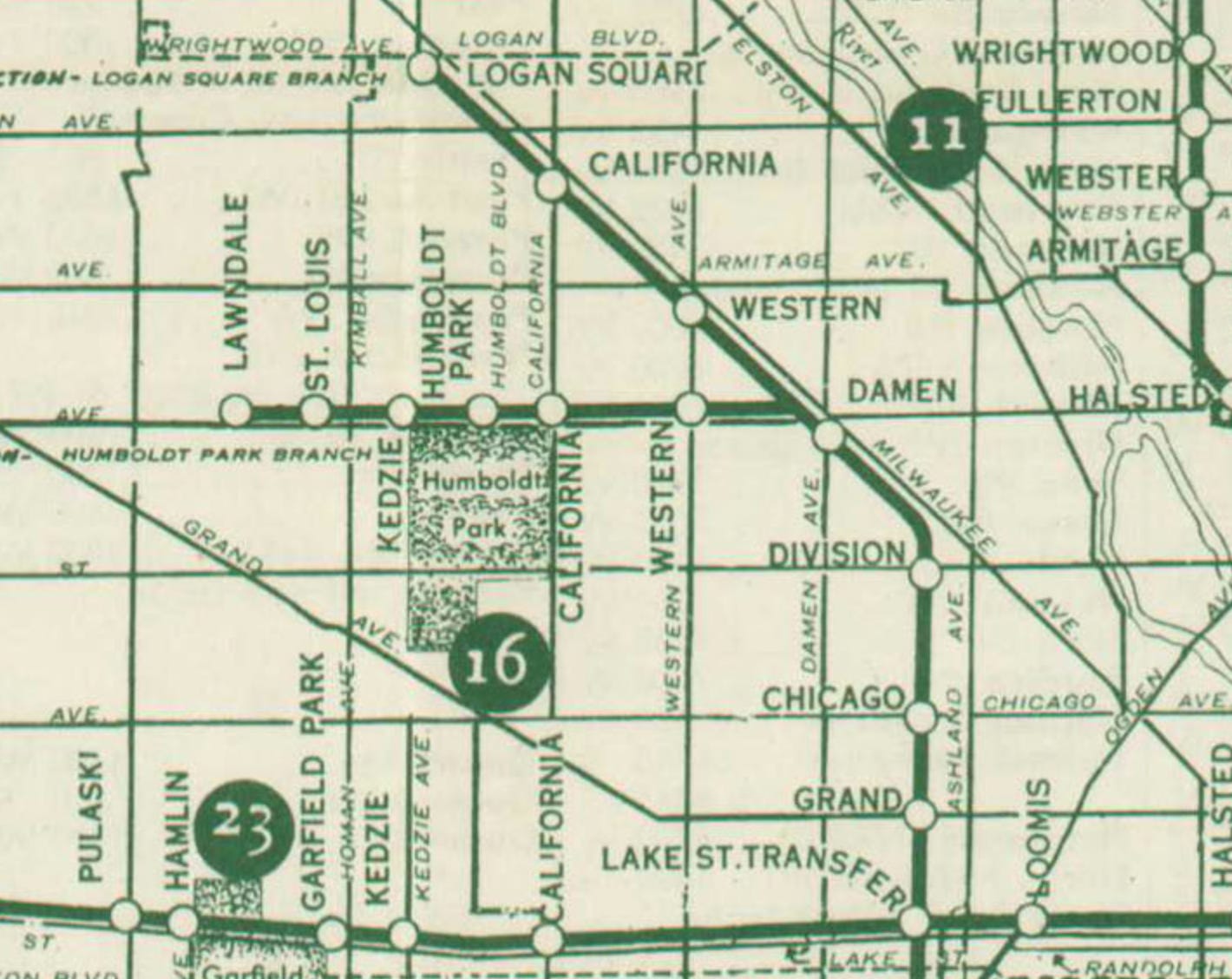
Another thing to note is that transit access to this part of Chicago used to be better than what it is now. Currently, the most obvious way to get to Ukrainian Village on the L is the Blue Line2, but you need to walk ~1.5 miles from the train to get to most of the places I talk about in this post3. Until the 1950s, though, there were trains running along Paulina Avenue, and the Chicago Avenue stop would’ve been much closer to the neighborhood.
What’s immediately obvious when you get to this neighborhood is that flying the Ukrainian flag isn’t just a trendy thing that you do when people are talking about the war in Ukraine4. You see the flags on people’s apartments, on local businesses—many of which are run by, and for, Ukrainian immigrants—and on churches that I’ll talk about below.
On the map, you can also find the 2 Ukrainian museums in the neighborhood that were part of OHC. So even though the concentration of Ukrainian residents in the neighborhood has decreased over the decades, there’s still a lot of Ukrainian cultural institutions that bring people in.
St. Nicholas Ukrainian Catholic Cathedral
We first visited St. Nicholas Cathedral, which is from 1915 and is the much older of the 2 Ukrainian churches we visited that day. OHC volunteers over the years have been invariably nice5, and many of them are people who use the building regularly. The volunteer at St. Nicholas that I talked to was a parishioner, who told us some of the history as well as what’s happening with their renovation (you can see the scaffolding in my photo below).
I failed to get a photo inside, as I was holding the 2-year old the whole time, so you should check out the photos on the OHC webpage. One detail that was unbelievable and very believable at the same time was that when they installed the 480-light chandelier in the 70s, it was the largest working chandelier in the US.
Here comes a really deep rabbit hole. If you just want the food and the buildings, you can skip to the next section, but I (clearly) think it’s super fascinating.
You may know some of the following:
Most Christians in Poland are Catholics. Famously, a relatively recent pope was from Poland.
There’s currently a rift among the Orthodox churches because the Patriarch Kirill, who heads the Russian Orthodox Church, publicly supports the Russian invasion of Ukraine.
Ukrainian Village hosts all the relevant parties here.6
Holy Trinity Russian Orthodox Cathedral, designed by Louis Sullivan (!), was part of OHC, but we didn’t make it there this time.
St. Helen Roman Catholic Church originally served a predominantly Polish parish, and still has service in Polish. They were also part of OHC and we visited them right after St. Nicholas.
St. Volodymyr Ukrainian Orthodox Cathedral was part of OHC in the past.
This tells you how deep and wide the Eastern European connections run in this area. If you were reading carefully, though, the church we visited was a Ukrainian Catholic church. What is that?
It turns out that a sizable fraction of western Ukrainians are Catholics, but they are not part of the Latin Church, which covers the vast majority of Catholics in the world. Ukrainian Catholic churches are part of the Eastern Catholic tradition, which has distinct practices.
On this point, the volunteer at St. Nicholas simply said “We do things a little differently”. I’ll take his lead and not get too deep into the weeds here, but one way to summarize it is that the Ukrainian Catholics use the Byzantine rite in terms of their rituals and such. This is what Orthodox Christians also use. So there should be a lot of surface similarity there.
And this is the deepest I got in this rabbit hole: one claim I heard that day was that the Ukrainian branch is the largest of the Eastern Catholic churches, and this turns out to be probably incorrect. Syro-Malabar Church is a tad larger according to Wikipedia (4.5 vs 4.3 million members).
And where is this Syro-Malabar Church based? In the state of Kerala in South India. This is a group of South Indians who have been practicing Catholicism since premodern times. Truly remarkable.
Tryzub Ukrainian Kitchen
We had lunch at Tryzub, a Ukrainian restaurant that I had been eyeing for years. Julie and I had their varenyky, which is the Ukrainian equivalent of the Polish pierogi, at something called the World Dumpling Fest. I thought they were decent, but it seemed like the dumplings were sitting there for a while and I wondered if they were better fresh.
So yes, I had to get their basic varenyky. When you have things in 2 cultures that are similar like varenyky and pierogi, my instinct is to try to figure out how one is not quite the same as the other, but the server literally said, “this is the potato and cheese pierogi”, and I don’t think there’s a major difference.
And yes, it was much better on site. The skin was soft, light and not bloated, and the toppings and sour cream added the accents that you want for the carb-heavy dish.
This being brunch time, I also enjoyed their mini potato pancake trio, which came with toppings like smoked salmon and dill cream sauce. And look at this fun chicken stew (paprikash) in a pumpkin.
We got another order of varenyky, with sour cherries. Since it was brunch, we were half-expecting it to arrive with the rest of the food, like it was pancakes. They actually intended it as dessert, and I agree with that decision.
One key detail here was that the skin had cacao flavor. I’m having trouble coming up with close comparisons—maybe nama yatsuhashi in Kyoto. It was definitely a surprise to have dumplings that taste like this, and I mean that in a very good way.
As we were eating at a booth, a formally-dressed group of 30+ people came in for what looked like a funeral luncheon, taking up most of the indoor seating. The patio was still open as of one month ago, and it was mostly populated by casually-dressed young Eastern European couples. There was a strong neighborhood feel for sure.
I know Anelya in Avondale is supposed to be a great Ukrainian restaurant at a higher price point, and I do want to try it, but Tryzub was great.
Sts. Volodymyr & Olha Ukrainian Catholic Church
The last place we visited that day was Sts. Volodymyr & Olha, another Ukrainian Catholic church. It’s only 2 blocks away from St. Nicholas, and the obvious question is why there’s 2 Ukrainian Catholic churches so close to each other. The answer is that St. Nicholas switched to the Gregorian calendar, and some people wanted to keep the Julian calendar so they splintered off.
Here, we got a 10-minute talk on how Eastern Catholic teachings inform the architecture of the church, starting with how the church is laid out in a Greek cross, i.e. equal-length in all 4 directions, with the altar on the east side. This is the sort of thing you love to see at OHC.
Setting aside the lecture, though, the space itself is spectacular. After the structure was built, they worked for nearly a decade to finish the decorations. I’m confident that no photo does justice to it, and you really could go to Ukrainian Village just to see it. I hope to take Julie and the baby—however old he’ll be—next time.
What I’m listening to now
I’ve mentioned Pearl & The Oysters multiple times before, and I had to talk about one of their albums at some point. They’re a duo of musicians who met in Paris, moved to Florida then to LA. They have a distinct take on indie electro-pop. I would describe some of their songs, such as “Together, Alone” and “A Planet Upside Down” here, as being like The Beach Boys if they grew up playing Nintendo7.
My favorite track is “Big Time”. I first heard this song around the same time as “Hello” by Girl and Girl (I talked about it here), and these are both upbeat songs about being down. This one is also a great LA song.
Bucktown is called that because Polish immigrants were raising goats there.
You can also take the Green Line to the Damen stop, which is closer, but you’d have to walk through an industrial area with lots of train tracks. I wouldn’t recommend it.
There’s of course buses along the arterial roads like Chicago, Western, and Damen. The bus line along Western is a popular candidate for conversion to bus rapid transit (dedicated bus lane with intersection priority for improved speed and reliability), because there are 5 L stations and 3 Metra stations on Western.
They put up multiple Ukrainian flags on DuSable Bridge (on Michigan) in early 2022, then took those down this summer.
Julie has considered volunteering, and I’ve been too selfish to consider it.
I’m not even touching the convoluted history of the connections between different branches of Orthodox churches in Europe and Orthodox churches in America.
“Radiant Radish” is their Beach Boys tribute song. The title refers to a food store that Brian Wilson owned.
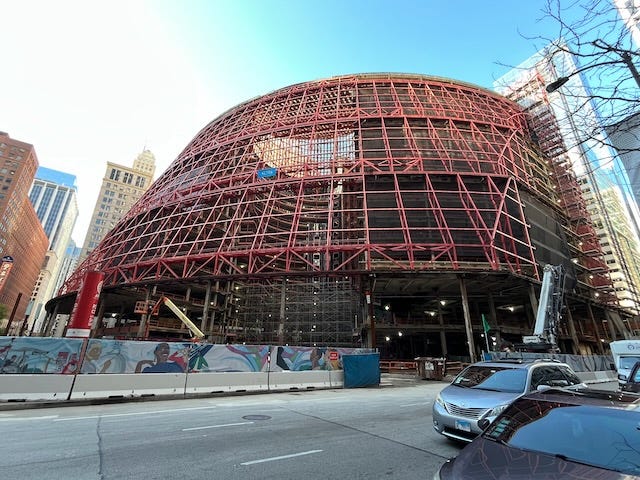
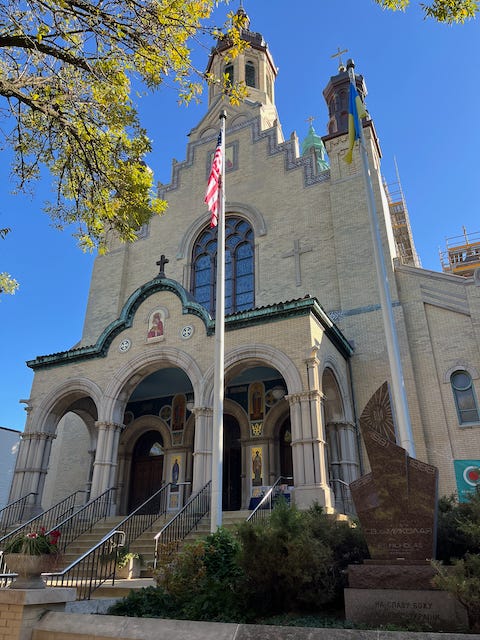
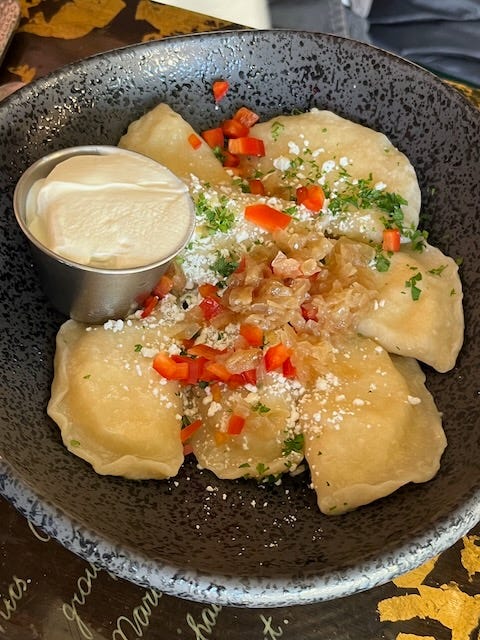
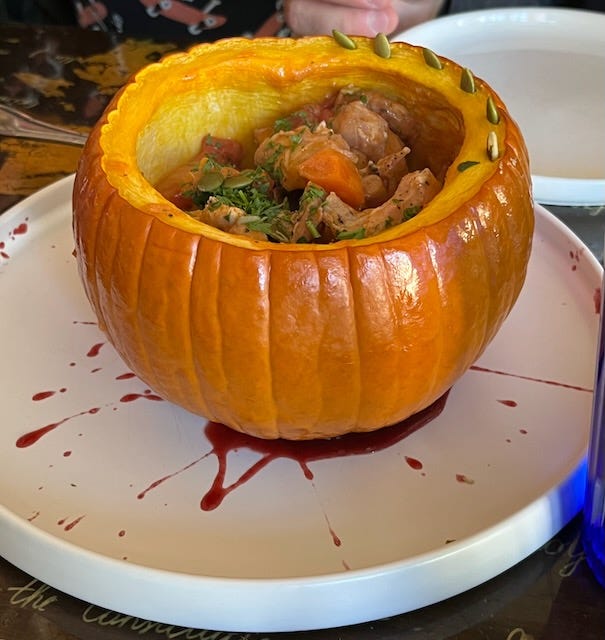
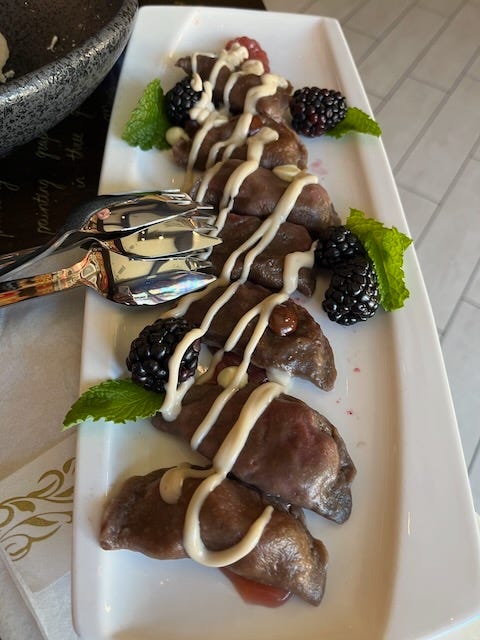
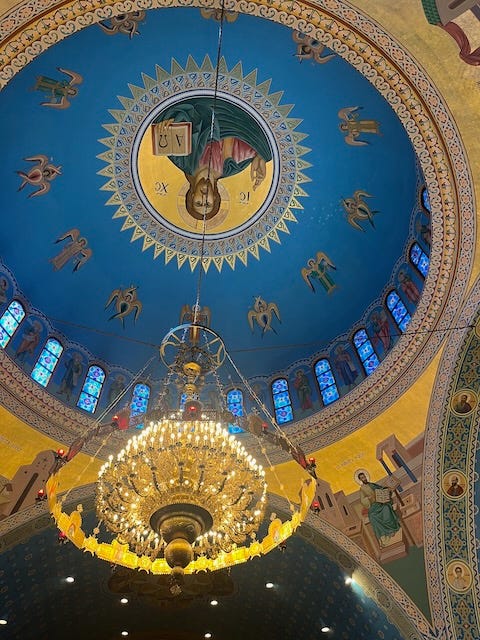
Wow, fascinating. Thanks for sharing!
Congrats on baby #2. Fascinated by the vintage CTA map. We live right near that Humboldt Park stop. Wonder if it was a tram line? Wish it were still in place!